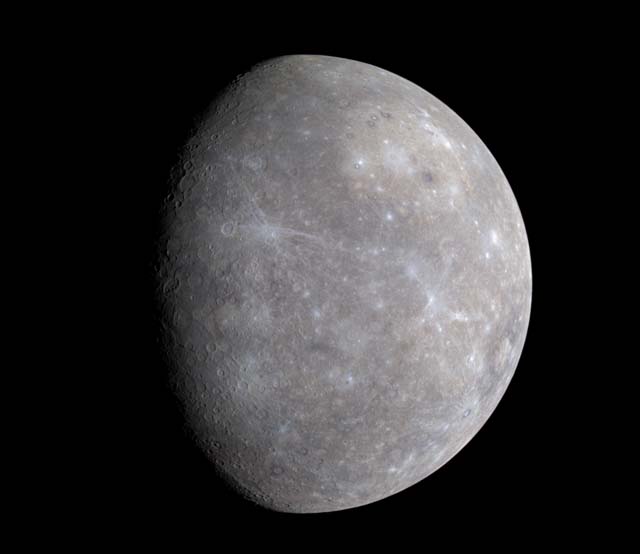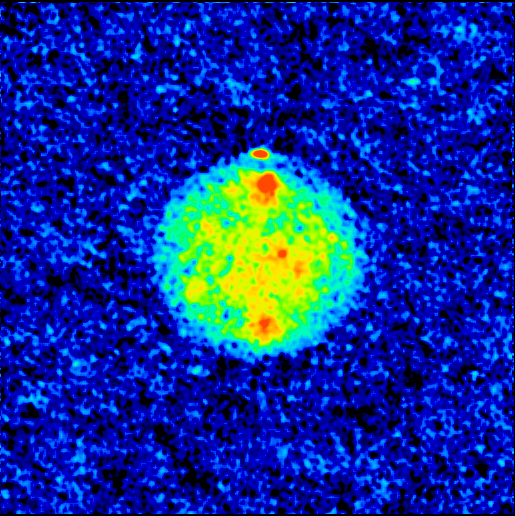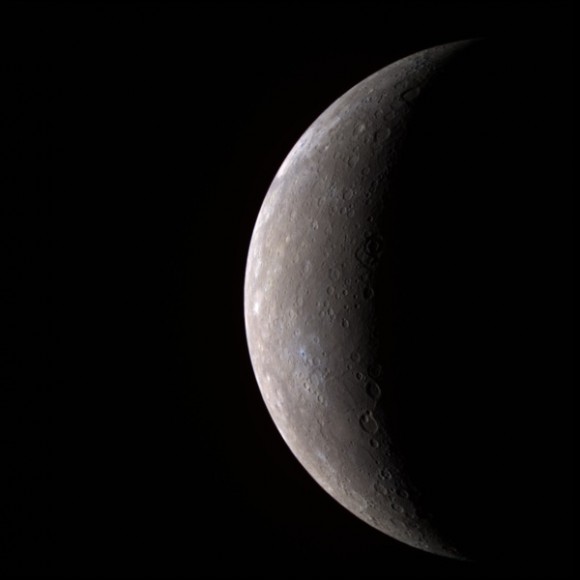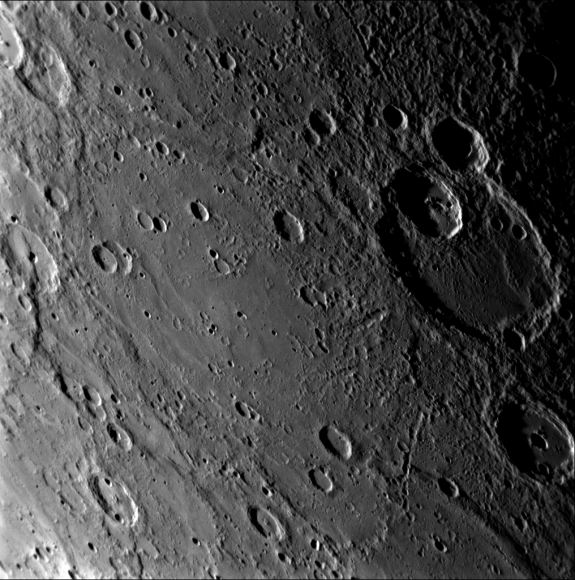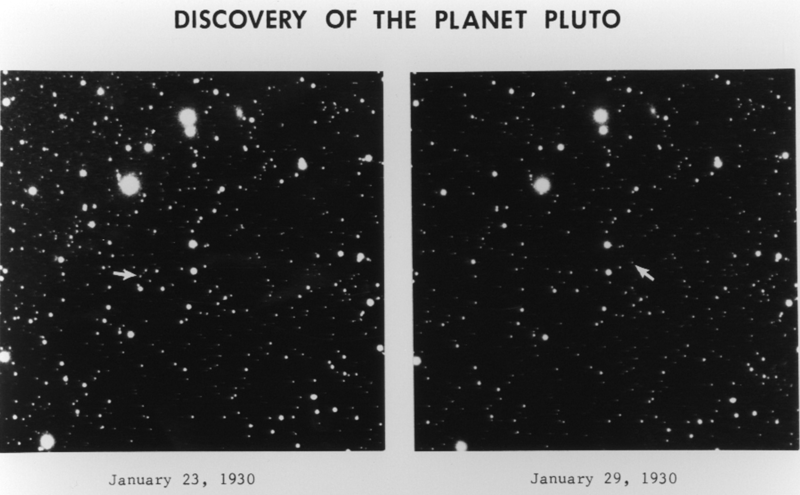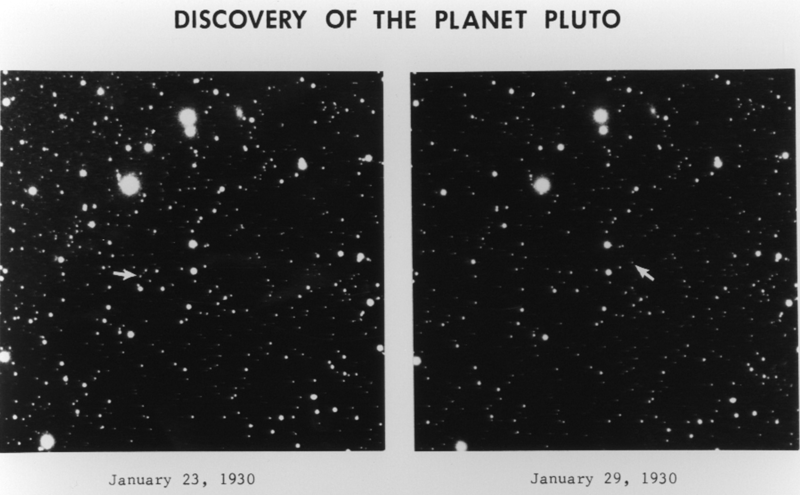The surface of Mercury is marred by an impressive number of craters. The cratering is deeper than on most terrestrial planets because of its lack of an atmosphere. A thicker atmosphere would have slowed impacting bodies, making the craters more shallow. Less than half of the surface of Mercury was mapped until recent images from MESSENGER were interpreted by NASA.
The surface of Mercury displays some amazing extremes. The temperature may range by an astounding 590 K. While the planet is the closest to the Sun, there are places that are dark enough to contain water ice and there is water in the tenuous exosphere. Additionally, it is the smallest planet by surface area, but it is also one of the most dense. Its core accounts for 42% of the planet’s volume.
The surface of Mercury is believed to be geologically inactive and has been for billions of years. Telescopic observation has shown areas of vastly different reflectivity. This indicates that the surface of Mercury has dorsa(ridges), highlands, montes(mountains), planitiae(plains), rupes(escarpments), and valles(valleys). Mercury was heavily bombarded by asteroids and comets about 3.8 billion years ago during the Late Heavy Bombardment period. During this period the planet received an overwhelming number of impacts over its entire surface. At that time, the planet was volcanically active and basins like the Caloris Basin were filled with magma, produced the smooth plains. Data received from MESSENGER shows a very jumbled, heterogeneous surface.
Mercury’s craters range in diameter. Some are tiny bowl-shaped cavities, while others are multi-ringed basins that are hundreds of kilometers in diameter. They are in various states of degradation: some are relatively young rayed craters, others are barely visible remnants. Similar impacts here on Earth would have left smaller ejecta fields because of the higher gravity levels. Caloris Basin is the largest known crater(remember the entire surface has not been mapped) at 1,550 km. The impact created lava flows and left a ring around the impact zone that is 2 km tall. On the other side of the planet(antipode) there is a large hilly area called the ”Weird Terrain” that may have been pushed out by the shock wave created by the impact on the other side of the planet.
The surface of Mercury is a broken and distorted landscape. Mariner 10 sent us images of about half of the planet and MESSENGER is doing everything that it can to complete the picture, but everything indicates a barren landscape that never had a chance to be anything but desolate.
We have written many articles about Mercury for Universe Today. Here’s an article about the formation of Mercury, and here’s an article about the atmosphere of Mercury.
If you’d like more information on Mercury, check out NASA’s Solar System Exploration Guide, and here’s a link to NASA’s MESSENGER Misson Page.
We’ve also recorded an entire episode of Astronomy Cast all about Mercury. Listen here, Episode 49: Mercury.
References:
NASA StarChild
Wikipedia
NASA Solar System Exploration: MESSENGER
NASA MESSENGER Mission Page
Superficie de Mercurio



